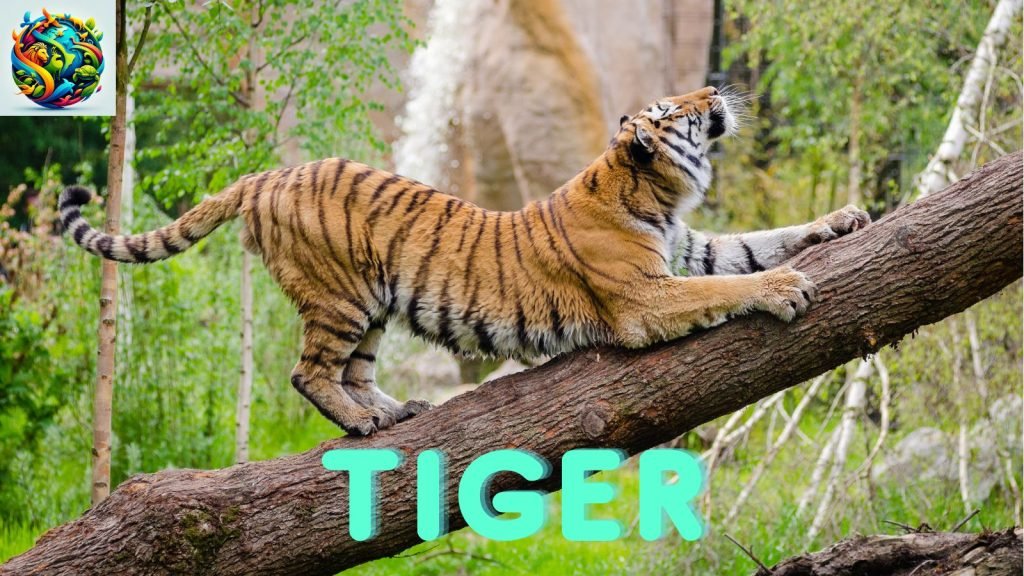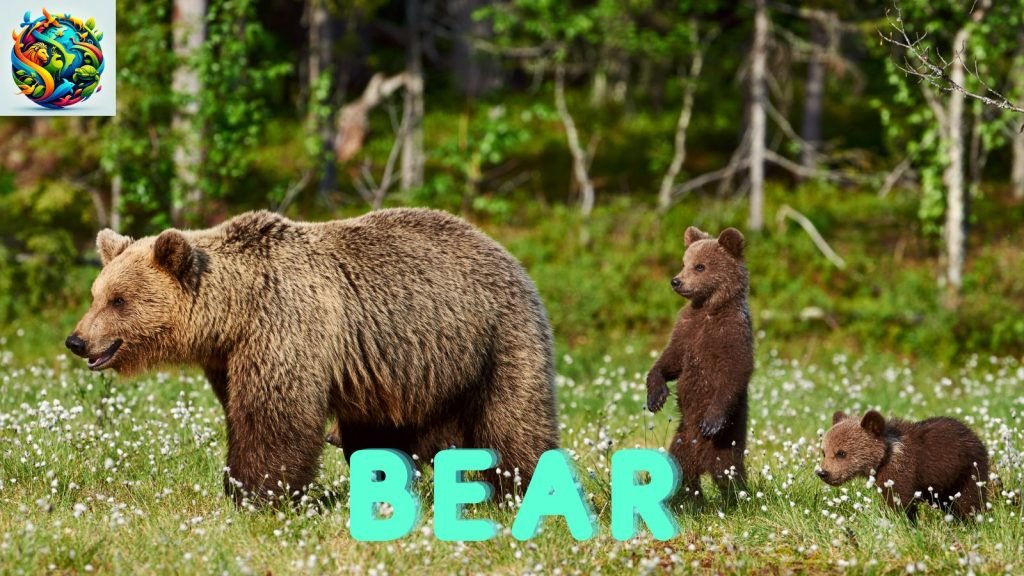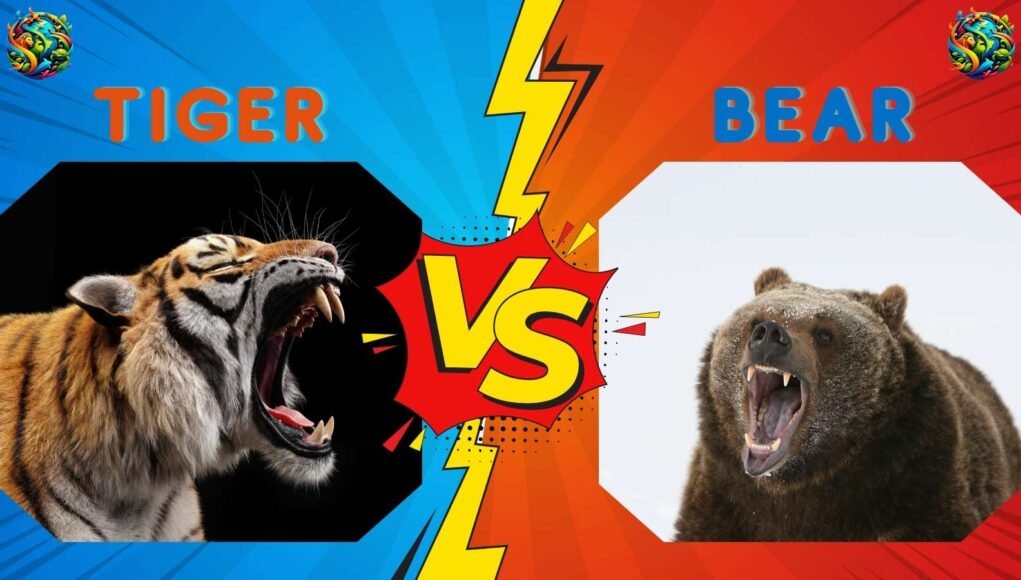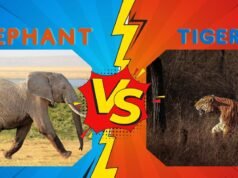Tiger vs Bear: Who Would Win in a Fight?
The tiger vs bear matchup is a thrilling clash between two of nature’s most powerful predators.The tiger vs bear are apex predators in their respective domains, but they have vastly different strengths, strategies, and fighting styles. Would the tiger’s speed, agility, and lethal precision give it the upper hand? Or would the bear’s brute strength, size, and raw power dominate the fight? This battle is not just about physical attributes but also about how each animal’s instincts, environment, and survival strategies come into play. Let’s dive into this epic battle and find out who would emerge victorious in a fight between tiger vs bear two titans of the wild.
Basic Overview of the Two Competitors ( Tiger Vs Bear)

The Tiger
The tiger is one of the most iconic and feared predators in the animal kingdom. Known for its striking orange coat with black stripes, the tiger is a symbol of power, stealth, and grace.
- Scientific Name: Panthera tigris
- Size: Tigers are large cats, weighing between 220 and 660 pounds (100–300 kg) and measuring 8 to 12 feet in length, including their tail.
- Habitat: Tigers are found in a variety of environments, including forests, grasslands, mangroves, and swamps. They are highly adaptable and can thrive in both tropical and temperate regions.
- Diet: Tigers are carnivorous and primarily hunt large ungulates such as deer, wild boar, and even buffalo. They are solitary hunters and rely on stealth and ambush tactics to catch their prey.
- Social Behavior: Tigers are solitary animals, except during mating season or when a mother is raising her cubs. They are highly territorial and mark their territory with scent markings and vocalizations.
- Speed: Tigers are incredibly fast, capable of reaching speeds of 35 to 40 miles per hour (56–64 km/h) in short bursts.
- Bite Force: Tigers have a bite force of approximately 1,050 pounds per square inch (psi), which is strong enough to crush bones and deliver a fatal bite to their prey.
- Defensive Traits: Tigers rely on their camouflage, stealth, and agility to avoid danger. Their sharp claws and powerful jaws make them formidable opponents in a fight.
The Bear

The bear is a symbol of raw power and resilience. With its massive size and strength, the bear is one of the most dominant predators in its habitat.
- Scientific Name: Ursus spp. (e.g., Brown Bear: Ursus arctos)
- Size: Bears vary in size depending on the species, but the largest, such as the Kodiak bear, can weigh between 330 and 1,500 pounds (150–680 kg) and measure 5 to 10 feet in length.
- Habitat: Bears are found in a wide range of environments, including forests, mountains, tundras, and coastal areas. They are highly adaptable and can thrive in both cold and temperate climates.
- Diet: Bears are omnivorous, meaning they eat both plants and animals. Their diet includes berries, fish, small mammals, and occasionally large prey like deer or moose.
- Social Behavior: Bears are mostly solitary animals, except during mating season or when a mother is raising her cubs. They are not territorial but will defend their food sources and cubs aggressively.
- Speed: Despite their size, bears are surprisingly fast and can reach speeds of 25 to 35 miles per hour (40–56 km/h) in short bursts.
- Bite Force: Bears have a bite force of approximately 1,200 psi, which is slightly stronger than that of a tiger.
- Defensive Traits: Bears have thick fur and a layer of fat that protects them from injuries. Their powerful forelimbs and sharp claws make them deadly opponents in a fight.
Key Comparisons: Tiger vs Bear
1. Size & Strength
When it comes to size and strength, the bear has a clear advantage. The largest bears, such as the Kodiak bear, can weigh up to 1,500 pounds, making them significantly larger and stronger than even the biggest tigers. Tigers, while muscular and powerful, weigh a maximum of 660 pounds, which is less than half the weight of a large bear. In a direct confrontation, the bear’s sheer size and strength would give it a significant edge.
Winner: Bear
2. Speed & Agility
Tigers are faster and more agile than bears. They can reach speeds of up to 40 miles per hour in short bursts and are capable of quick directional changes, making them highly effective hunters. Bears, while surprisingly fast for their size, are slower and less agile than tigers. They rely more on their strength and endurance than on speed.
Winner: Tiger
3. Intelligence & Strategy
Both tigers and bears are intelligent animals, but they use their intelligence in different ways. Tigers are highly tactical hunters, using stealth, patience, and precision to ambush their prey. They are also solitary animals, which means they rely on their own skills and instincts to survive. Bears, on the other hand, are more opportunistic and rely on their strength and adaptability to find food. While they are not as strategic as tigers, they are highly resourceful and can use problem-solving skills to overcome challenges.
Winner: Tiger
4. Offensive & Defensive Weaponry
Both animals are equipped with powerful weapons, but the bear has a slight edge in this category. Tigers have sharp claws and a strong bite force of 1,050 psi, which they use to deliver fatal bites to their prey. Bears, however, have even stronger jaws, with a bite force of 1,200 psi, and their massive claws are capable of inflicting serious damage. Additionally, bears have thick fur and a layer of fat that provides natural armor, making them more resistant to injuries.
Winner: Bear
5. Fighting Style of Tiger Vs Bear
Tigers rely on ambush tactics and precision to take down their prey. They target weak spots such as the neck or spine to deliver a fatal bite. Bears, on the other hand, use their weight and strength to overpower their opponents. They often stand on their hind legs to intimidate and strike with their powerful forelimbs. While the tiger’s fighting style is more calculated, the bear’s raw power and intimidation often give it the upper hand in a direct confrontation.
Winner: Bear
Fight Scenarios: Tiger vs Bear
Scenario 1: One-on-One Battle on Land
In a one-on-one battle on land, the tiger would likely use its speed and agility to try to outmaneuver the bear. It would attempt to deliver a fatal bite to the bear’s neck or spine, but the bear’s thick fur and fat would provide significant protection. The bear, in turn, would use its strength and powerful claws to strike back. While the tiger might land a few blows, the bear’s size and strength would eventually overwhelm the tiger, forcing it to retreat.
Winner: Bear
Scenario 2: One-on-One Battle in Water
In water, the bear has a clear advantage. Bears are strong swimmers and are highly comfortable in aquatic environments. The tiger, while also a capable swimmer, would struggle to match the bear’s strength and endurance in water. The bear would use its weight to push the tiger underwater, making it difficult for the tiger to fight back.
Winner: Bear
Scenario 3: Tiger Pack vs Bear
While tigers are solitary animals, let’s imagine a hypothetical scenario where multiple tigers team up against a bear. The tigers would use their agility and teamwork to surround the bear, attacking from different angles. The bear would struggle to defend itself against multiple attackers, but its sheer size and strength would allow it to fend off the tigers. However, the tigers’ coordinated attacks could eventually wear the bear down.
Winner: Tigers
Final Verdict: Who Would Win?
After analyzing every aspect of the tiger vs bear battle, here’s the final breakdown:
| Category | Winner |
|---|---|
| Size & Strength | Bear |
| Speed & Agility | Tiger |
| Intelligence & Strategy | Tiger |
| Bite Force | Bear |
| Weapons (Claws, Strength) | Bear |
| Combat Strategy | Bear (Brute Force), Tiger (Precision) |
| Survival Skills | Tie (Both are apex predators) |
Ultimate Winner: Bear in Direct Combat, Tiger in Strategic Ambush
- In a one-on-one battle, the bear wins 70% of the time due to its size, strength, and natural armor.
- In water, the bear has a clear advantage.
- In a hypothetical pack scenario, tigers could outmaneuver and overwhelm the bear.
Conclusion
The bear’s raw power, size, and defensive traits make it a formidable opponent in a direct fight. However, the tiger’s speed, agility, and tactical precision give it a fighting chance, especially in an ambush scenario. While the bear is likely to dominate in most one-on-one encounters, the tiger’s intelligence and adaptability make it a worthy adversary. In the end, the outcome depends on the environment, the individuals involved, and the element of surprise. Both animals are awe-inspiring predators, and this matchup highlights the incredible diversity of nature’s hunters. Whether it’s the tiger’s calculated precision or the bear’s overwhelming strength, this battle reminds us of the fascinating dynamics of the animal kingdom.




